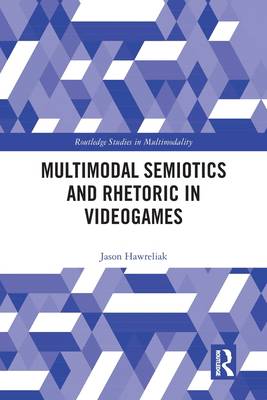
- Afhalen na 1 uur in een winkel met voorraad
- In januari gratis thuislevering in België
- Ruim aanbod met 7 miljoen producten
- Afhalen na 1 uur in een winkel met voorraad
- In januari gratis thuislevering in België
- Ruim aanbod met 7 miljoen producten
Omschrijving
This book merges recent trends in game studies and multimodal studies to explore the relationship between the interaction between videogames' different modes and the ways in which they inform meaning for both players and designers. The volume begins by laying the foundation for integrating the two disciplines, drawing upon social semiotic and discourse analytic traditions to examine their relationship with meaning in videogames. The book uses a wide range of games as examples to demonstrate the medium's various forms of expression at work, including audio, visual, textual, haptic, and procedural modes, with a particular focus on the procedural form, which emphasizes processes and causal relationships, to better showcase its link with meaning-making. The second half of the book engages in a discussion of different multimodal configurations and user generated content to show how they contribute to the negotiation of meaning in the player experience, including their role in constructing and perpetuating persuasive messages and in driving interesting and unique player decisions in gameplay. Making the case for the benefits of multimodal approaches to game studies, this volume is key reading for students and researchers in multimodal studies, game studies, rhetoric, semiotics, and discourse analysis.
Specificaties
Betrokkenen
- Auteur(s):
- Uitgeverij:
Inhoud
- Aantal bladzijden:
- 212
- Taal:
- Engels
- Reeks:
Eigenschappen
- Productcode (EAN):
- 9780367584788
- Verschijningsdatum:
- 30/06/2020
- Uitvoering:
- Paperback
- Formaat:
- Trade paperback (VS)
- Afmetingen:
- 147 mm x 226 mm
- Gewicht:
- 299 g

Alleen bij Standaard Boekhandel
Beoordelingen
We publiceren alleen reviews die voldoen aan de voorwaarden voor reviews. Bekijk onze voorwaarden voor reviews.









